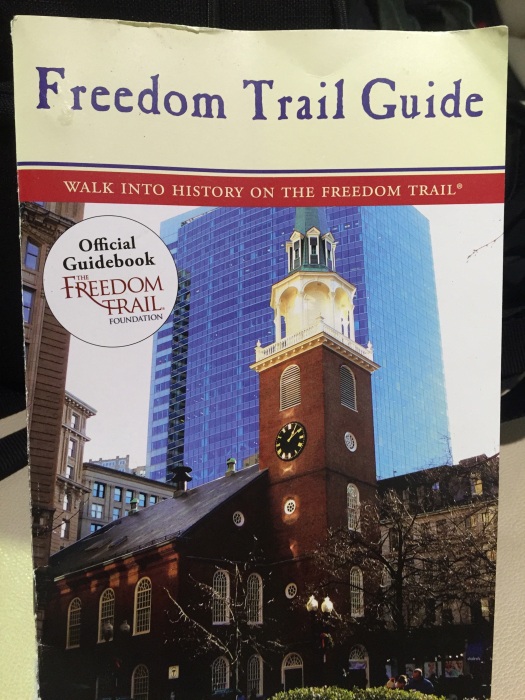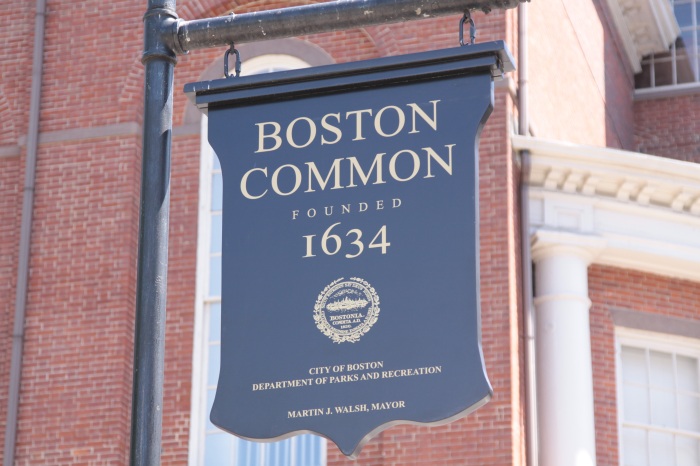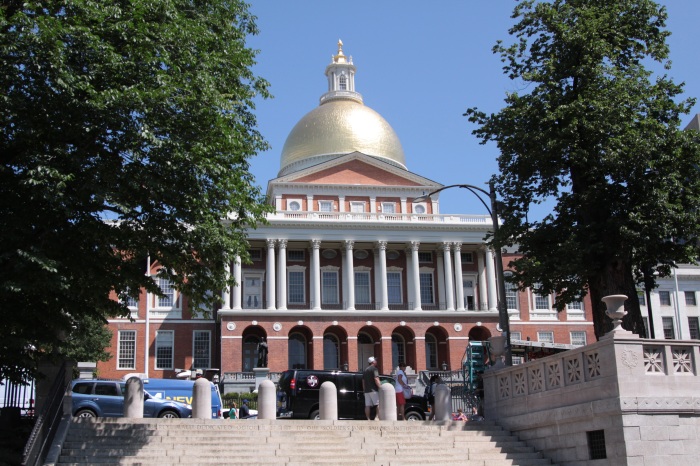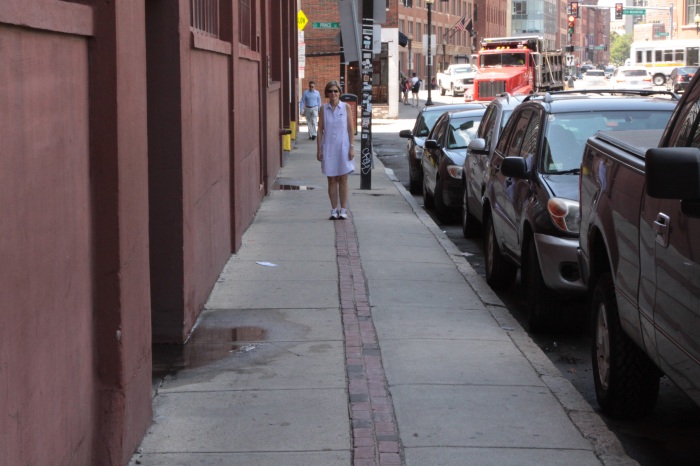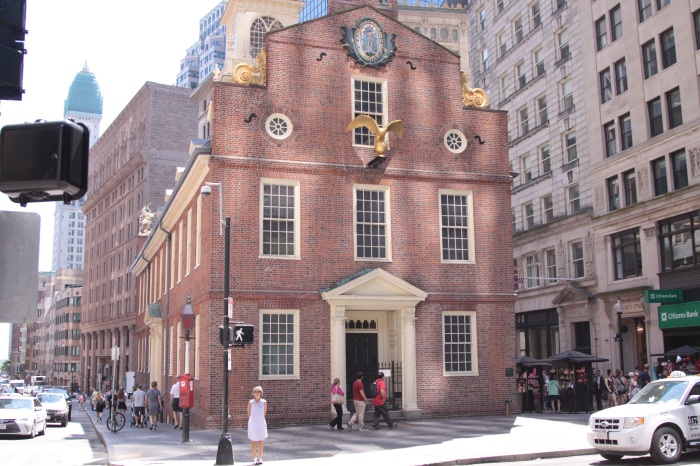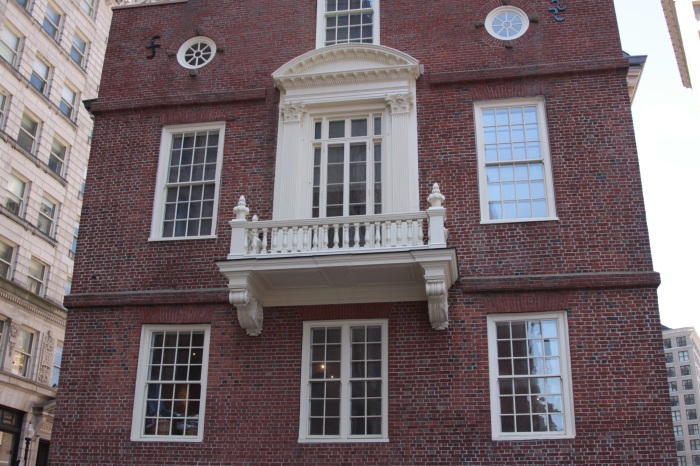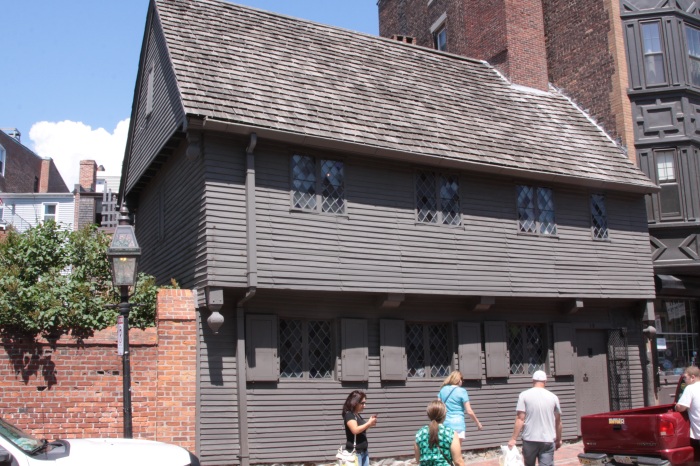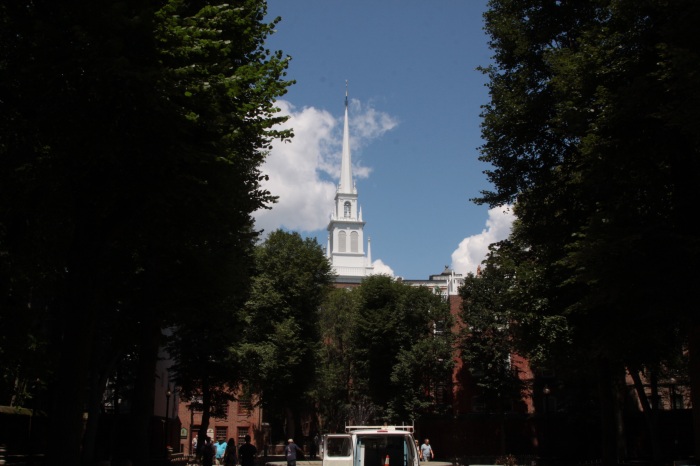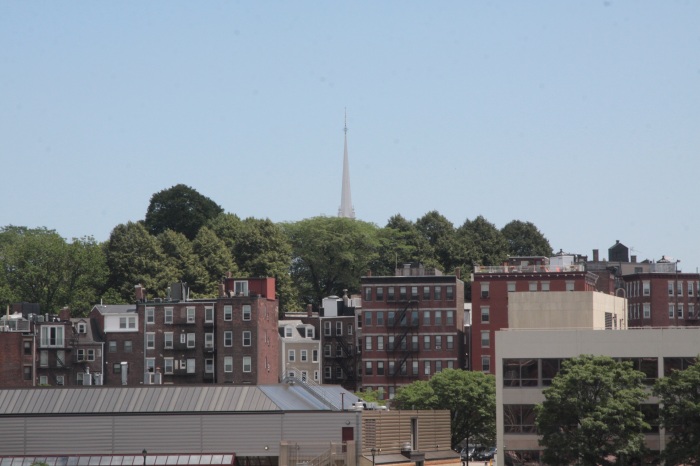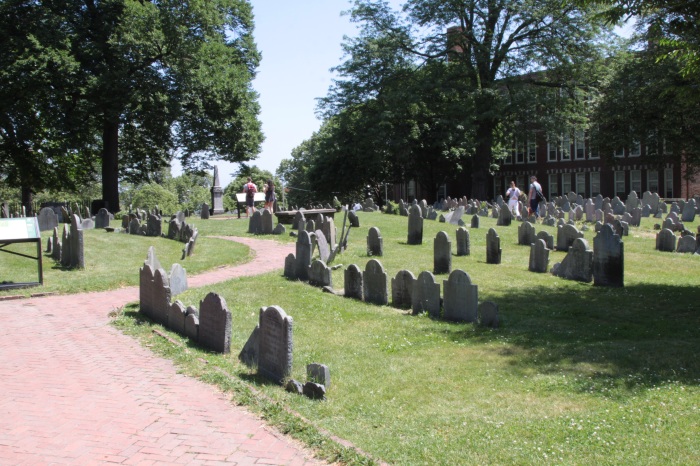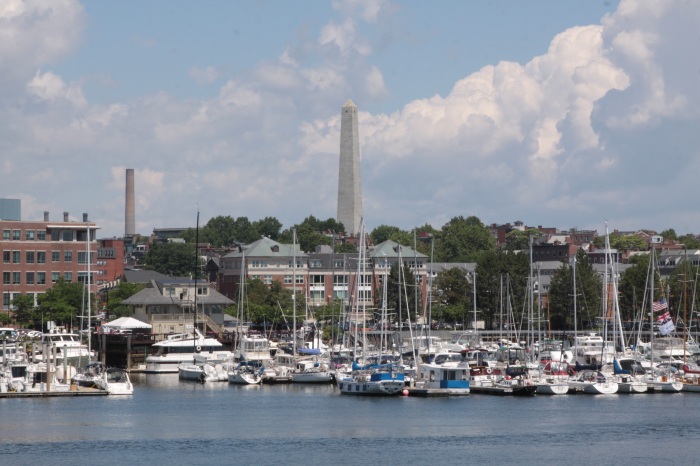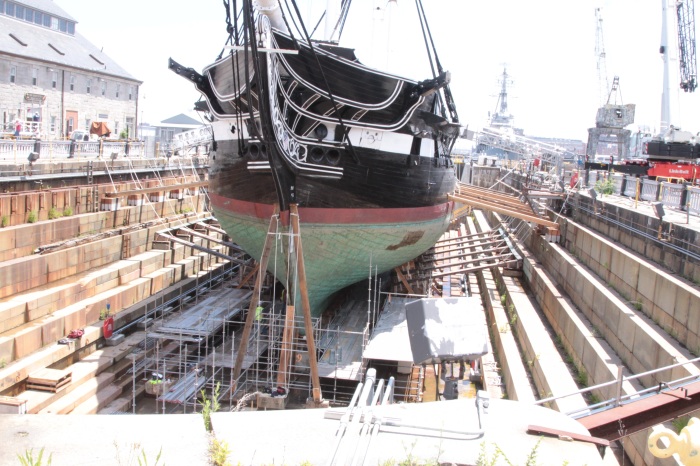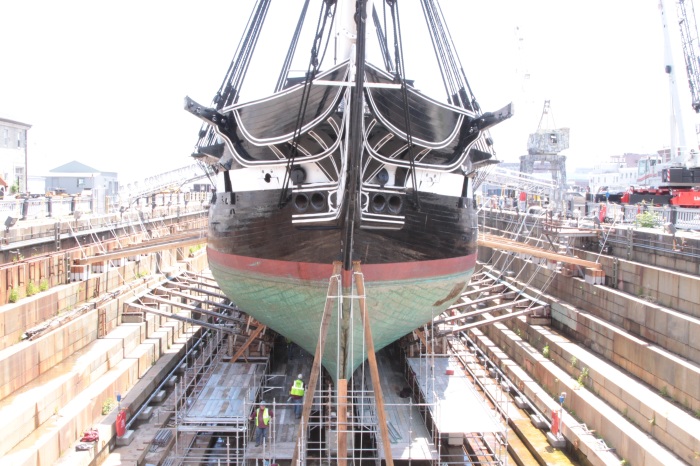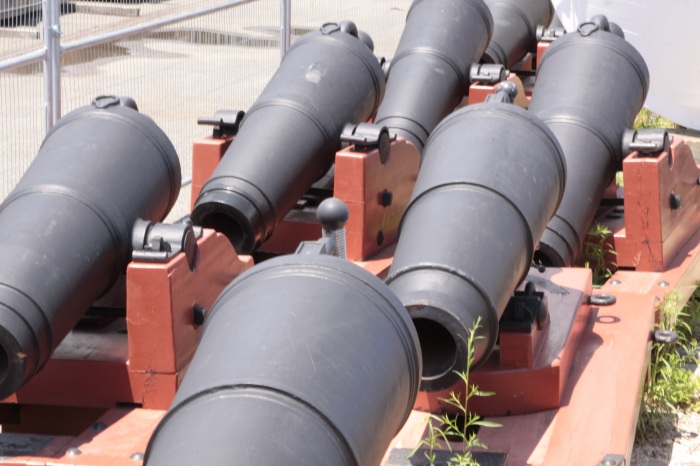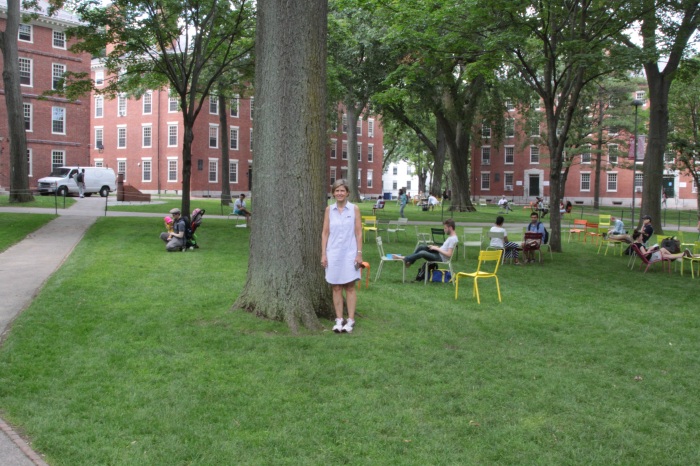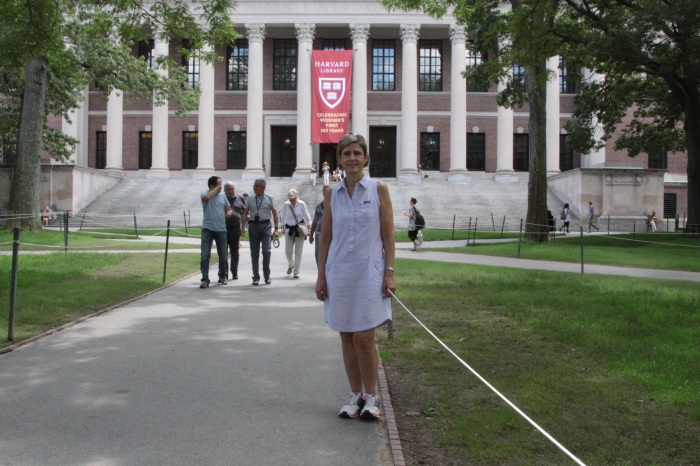No trip to Boston is complete without experiencing the Freedom Trail. The Freedom Trail is a 2.5 mile path through Boston that passes by 16 historical sites that are significant to the history of Boston and the history of our country.
We chose to walk the trail and started at the Boston Common.
I cannot believe that I failed to get a picture of the common but it is the oldest public park in the United States. It is a 44 acre green space in downtown Boston. It seems that all Massachusetts towns have a common — but Boston’s is larger than most. This is where the British Redcoat Army camped when they were stationed here in 1765. Today it is technically a park for everyone to enjoy. The Freedom Trail begins here. I will post a few pictures of my favorite places on the trail.
The Massachusetts State House sits on the edge of the Common. It serves as the state capitol. The dome was originally overlaid by copper by Paul Revere in 1798. In 1874 it was covered by this 23-karat gold leaf.
The path of the Freedom Trail is marked by this brick path as it meanders through town.
This is the Old State House—-built in 1713. This building was the center of civic events leading up to the American Revolution. It now houses the American Revolution Museum.
The Declaration of Independence was read to the citizens of Boston for the first time from the balcony of this building—-on the opposite side from the front entrance.
This is Paul Revere’s home —- just a few blocks from the Boston Common. It dates to 1680 and is the oldest building in downtown Boston. He was living in this house on the night of his famous ride on the night of April 18, 1775.
This is the Old North Church. This steeple is where the two lanterns were hung to alert the Colonial Patriots in Charlestown (across the Charles River) that the British Redcoats were leaving Boston by crossing the river. “One if by land, two if by sea.”
This is what the steeple looks like from across the river in Charlestown. I took this picture from the foot of the bridge on the Charlestown side of the river. One interesting note: The river is now much more narrow in width than in 1775. Also, the peninsula of land that Boston sits on is much wider now. There has been much much fill put into the water to expand the land mass of downtown Boston. Old maps of Boston show that the land mass of Boston was quite different in 1775 compared to today.
On the night of April 18, 1775—-the large trees were not there—- making the steeple much more visible.
This is the cemetery called Copp’s Hill Burying Ground. This is where the trees in the above picture are. This has been a cemetery since 1659 and is one of the 3 highest points in Boston. It was on this high vantage point that the British set their cannons during the famous battle of Bunker Hill in 1775.
This is the Bunker Hill monument as seen from the bridge crossing the Charles River. The famous Battle of Bunker Hill was technically a British victory but it proved that the Colonial army could fight effectively against the well trained and better equipped British army.
These are pictures of the USS Constitution. This famous warship was first launched in 1797 and is still a commissioned warship in the US Navy. It is the oldest commissioned warship in the world. This historic ship is permanently docked at the Charlestown naval shipyard—just a few blocks from Bunker Hill. It got the name “Old Ironsides” because of it’s effectiveness when she fought the British Frigate HMS Guerriere in the war of 1812. The British cannonballs seemed to just bounce off of the sides of the USS Constitution due to it’s unique three-layered construction of live oak and white oak. She is now undergoing a complete restoration and is in dry-dock.
Notice the dry-dock that the Constitution is sitting in. This is Dry-dock # 1 at the Charlestown Naval Shipyard. It and an identical dry-dock at Norfolk Naval shipyard were built in 1833. Guess what ship was the first ship to be put in this dry-dock in 1833 for repairs??—-The USS Constitution! This dry-dock cost 1.5 million dollars to build in 1833 and was the largest civil project ever attempted by the US government at that time. It revolutionized the shipbuilding industry.
These are a few of the cannons from the ship that were lined up on the dock.
after seeing the USS Constitution, we walked back to the Common and caught the subway to Harvard. We wanted to say that we had walked on Harvard Yard!
Yes—-I know it’s HAVUD——Not HARRVERD.

